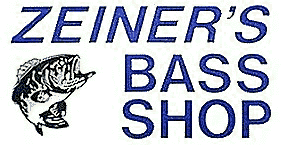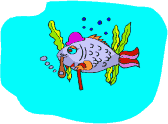 |
Fishing Stories from Ned Kehde |
|
Fishing Reports Reader's Nook Angler's Academy Club Corner Tournament Trail Success Stories Kansas Angler Info Angler Links |
Submitted by Ned Kehde - September 12, 2000 In the lexicon of anglers, a spoon is a lure. The spoon that most anglers in these parts employ is commonly called a slab spoon. Some folks, however, call it jigging spoon. In essence, it is small but heavy lure that is designed to be hopped across the bottom, aping an injured gizzard shad. Around northeastern Kansas most of the spoons are constructed out of lead and painted white or chartreuse. Many area fishermen contend that Vic Oertle of Manhattan and proprietor of Fishtech Lures manufactures the best lead spoon. Oertle calls his rendition the Double W Shad Flutter Spoon; the W stands for white bass and wipers, and it is designed to catch those two species. Each of Oertle's spoons has a small strip of chrome affixed one side, and the split ring that holds a No. 4 nickel treble hook also sports a chrome spinner blade. His smallest spoon is a l/4-ounce model, and the biggest weighs an ounce. The 1/2- and 3/4-ounce spoons are the ones that most anglers around Lawrence employ. In early August, the Double W spoons allured so many fish that even Terry Bivins of Lebo called Oertle and ordered some 1/2-ouncers and began wielding them. And that was an unusual thing for Bivins to do Normally, Bivins shuns spoons, saying that they inadvertently kill too many fish by tearing their gills. Instead he prefers to employ either a 1/4- or 3/8-ounce gray or chartreuse jig. In summers past, Bivins was so adept at methodically hopping a jig across the bottom that he could catch scores more fish than the most talented spoon fishermen could muster. But for come inscrutable reason, this summer the fish of all species exhibited a preference for the spoon over Bivin's deftly retrieved jigs. Traditionally in the summer, Kansas fishermen employ a spoon to entice white bass and wipers, but this time around spoons also allured scads of walleye, sauger, saugeye, crappie, drum, and channel catfish. For instance, Chris Ogburn of Ottawa and his children caught scores of channel catfish on spoons at Melvern; one of those cats broached 20 pounds. At Perry Lake, Bryce McHenry of Olathe, Pok-Chi Lau of Lawrence and a friend wielded spoons for just 16 hours during a five-day spell when the water temperature hovered at 85 degrees and heat indexes regularly surpassed 110 degrees. And in the midst of all this heat, they caught and released 558 fish. Then on one of the most brutally hot afternoons in August, Oertle fished his 3/4-ounce spoon at Milford Lake for four hours, and the fishing was so white-hot that he tangled with fish on all but 20 casts. Anglers always formulate theories why fish behave they way they do, and this summer anglers concluded that the consistently hot and dry weather in July and August caused these fish to gather at several unique coverts for days on end. At Perry, for instance, there were six small environs in 12 to 20 feet of water that sheltered hundreds of fish for nearly six weeks Whenever the fish are tightly schooled for long spells, they are often aggressive and easily enticed by a spoon. Upon discovering such a spot with a spoon, some anglers suffered the grand illusion that the lakes were chockfull of fish. Of course, the lakes weren't brimming with fish; the spoon just made it seem that way. |
|
Kansas Angler Online Sponsor  |
Copyright 2000 by The Kansas Angler - P.O. Box 12261 - Wichita, KS 67211 - Phone 316-265-5551 Questions or problems with this website should be directed the link above. This Page Last Updated on date shown at top of page. |

